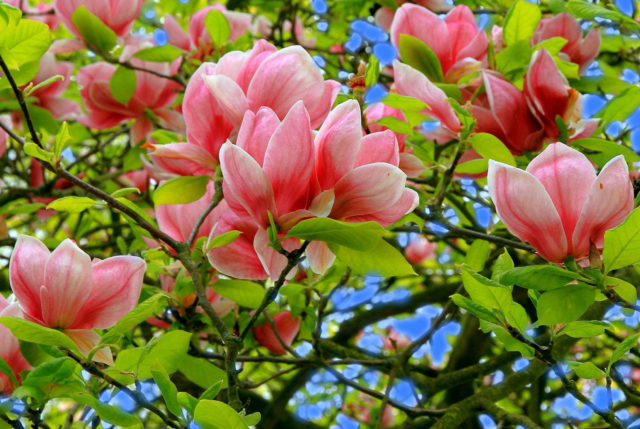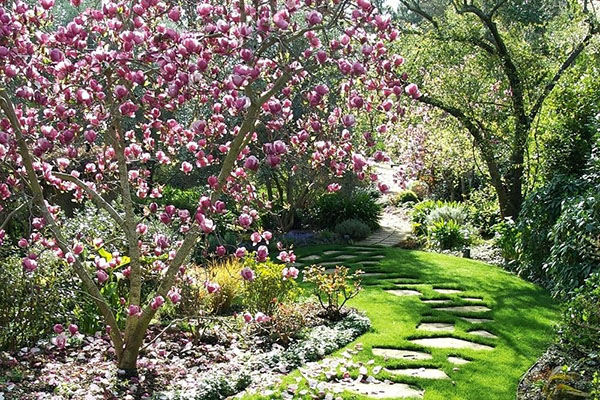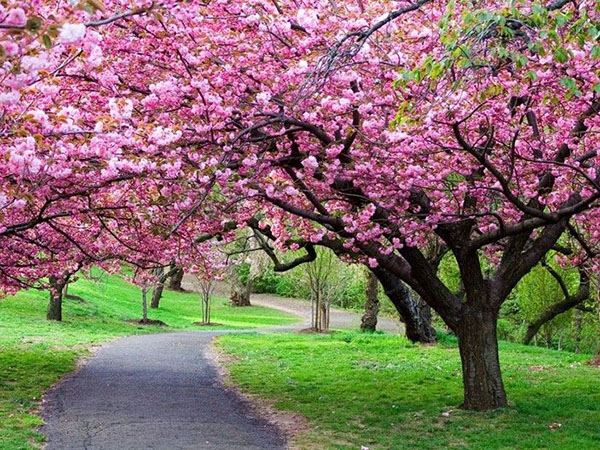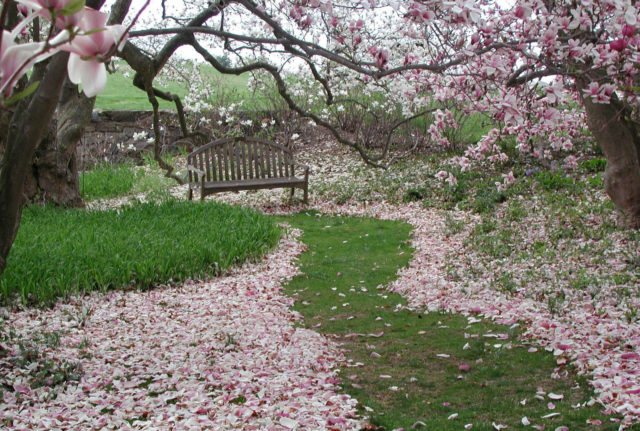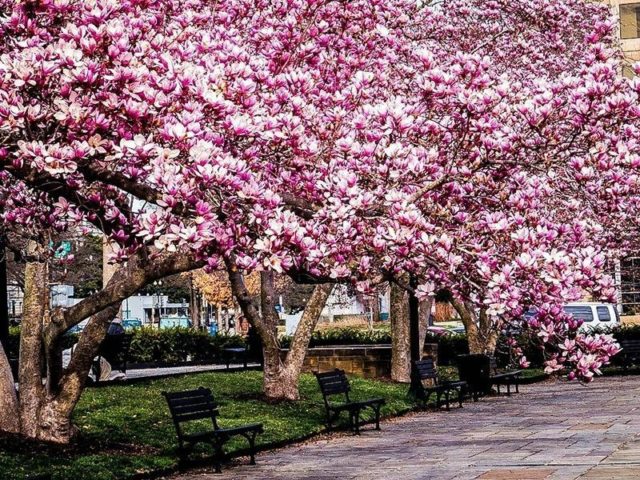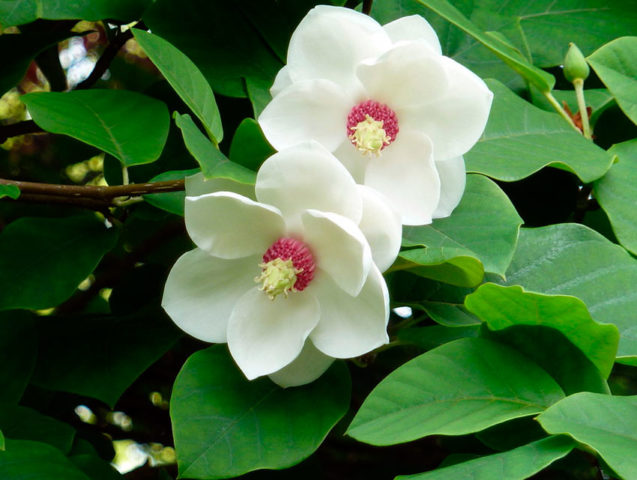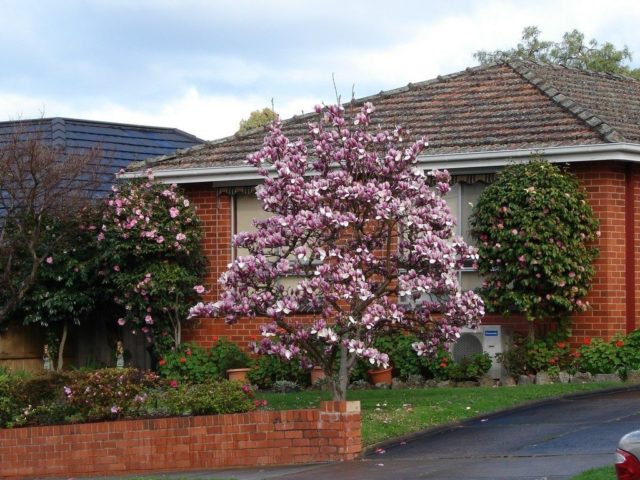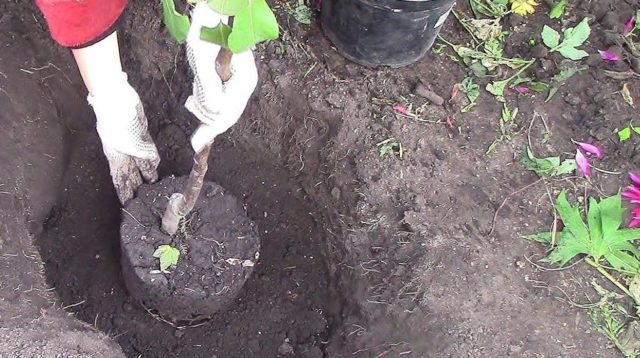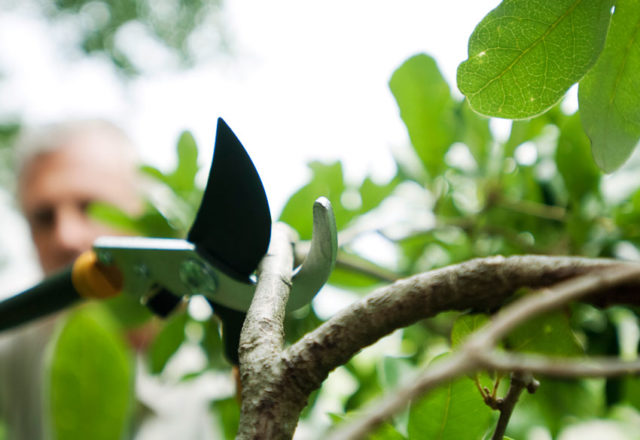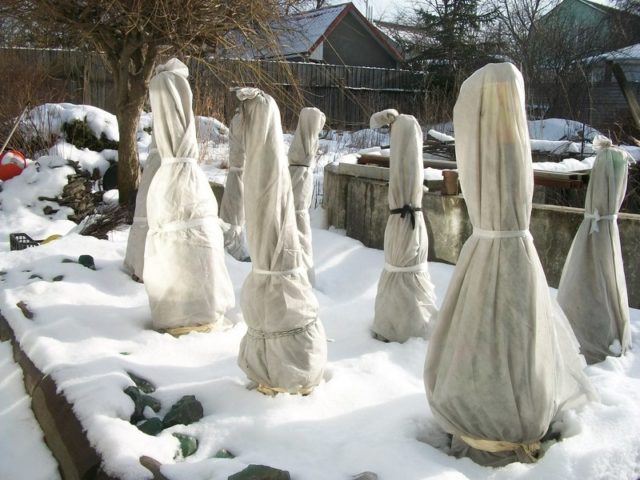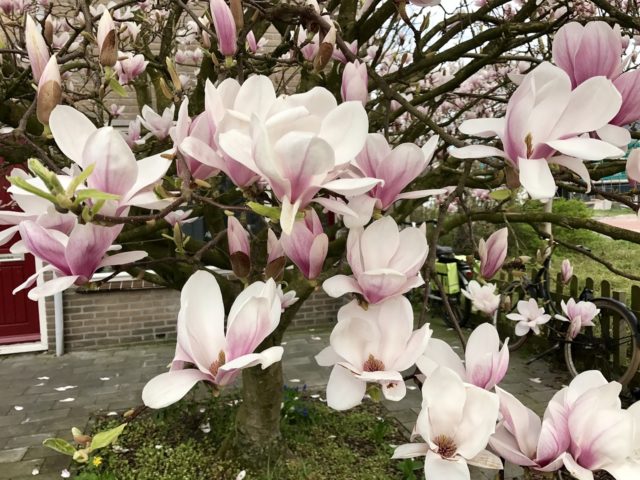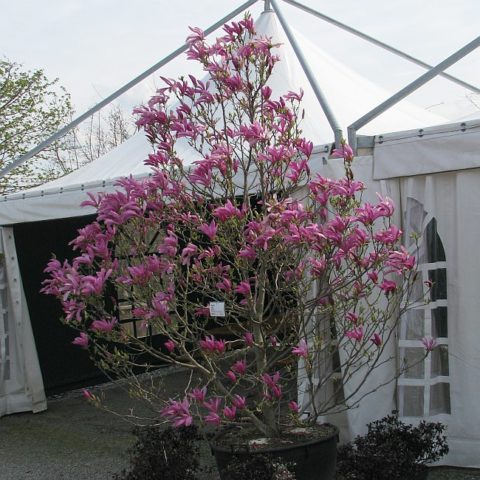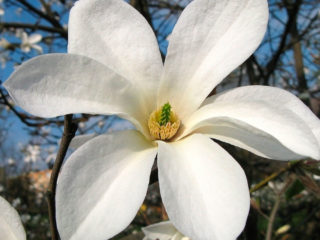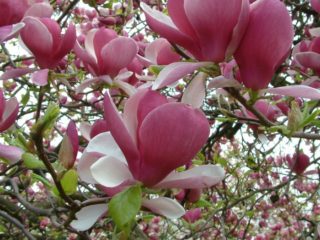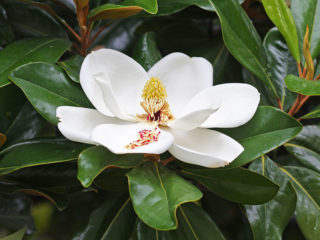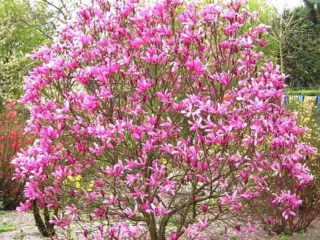Content
Magnolia is an ornamental, flowering plant with a treelike or shrub crown formation. It feels good in the southern regions, Crimea. Planting and caring for magnolia outdoors does not require special knowledge. With the right choice of location, compliance with the rules of agricultural technology, careful preparation for the autumn-winter period, it is possible to grow and achieve its flowering in the Urals, Siberia, and central Russia.
Conditions for growing magnolia
Magnolia is a thermophilic, long-growing tree, 10 - 30 m high (depending on the variety and climate). It grows mainly in the southern regions, Crimea. It blooms from early spring to mid-summer.
For planting in the conditions of central Russia, in the Urals, Siberia, hybrid frost-resistant varieties have been bred that can withstand winter temperatures down to -35 aboutFROM.
Growing and caring for magnolia in the open field is similar to the principles of agricultural technology for thermophilic fruit crops (pears, apricots, grapes):
- Suitable for planting are spacious, well-lit areas protected from drafts and winds from the north and east sides.
- The soil should be light, moist, but without stagnant water. Its neutral composition will be optimal.
- The trunks of young seedlings are mulched. Magnolia does not like overdried land, it begins to hurt, wither.
- The first 3 - 4 years after placement in the open ground, the tree is covered with soft burlap for the winter, protected from frost, wind, and rodents.
- Top dressing is started from the second year of the plant's life. An excess of alkaline or nitrogen fertilizers slows down growth, reduces immunity, and leads to foliage and buds falling off.
- Magnolia does not tolerate pruning. If necessary, crown formation and sanitization are carried out in the fall, after flowering.
The use of magnolia in landscape design
For landscaping a site in the Urals or in central Russia, it is worth choosing frost-resistant varieties of magnolia Siebold, Kobus, Sulange, Magnolia nude, Lebner, Pointed.
Hybrids can withstand frosts down to -27 - 33 aboutC, tolerates cold, windy winters well.
Outdoors magnolia is planted as a single shrub or in a design group in the foreground or middle ground. To create a composition, it is combined with thuja, linden, viburnum, juniper, blue spruce.
Magnolia looks good with any annual or perennial flowers, it can decorate an entrance group, a gazebo, part of a garden or park with a mini-stream or waterfall.
Blooming trees decorate paths, decorate squares, recreation areas.
What year does magnolia bloom after planting?
The shrub is considered to be slow growing. Magnolias obtained from seeds will bloom only in the 12-15th year of life.
The flowering of seedlings obtained by cuttings can occur in the 7th - 8th year after adaptation to open ground.
When transplanting a tree in a new place, there will be no bud formation until the magnolia is fully engrafted. An adult, early flowering plant will bloom only the next year.
How to plant magnolia
Not every region is suitable for growing magnolia. An ornamental plant is sensitive to frost, temperature changes, soil conditions, light intensity, and drafts.
In order for the tree to take root, overwinter safely, begin to grow and develop, you need to choose the right time and place of planting, as well as prepare the soil, taking into account the recommendations of specialists.
When to plant a magnolia
For placement in the open field, strong seedlings with a height of about 1 m with 1 - 2 viable buds are chosen. Samples with a closed root system, protected from drying out, take root better.
Gardeners note that the optimal time for planting a magnolia is the end of October, when the seedling is dormant and does not give young growth. Before frost, the tree has time to build up the root system, it is easier to endure the harsh winter conditions.
Planting magnolias in spring is acceptable, but timing is important:
- In the southern regions, Crimea, young shoots are taken to the site in April.
- In the middle lane and in the Urals, it is better to postpone transplanting a seedling to open ground until the end of May, because there is a high probability of recurrent night frosts.
- In Siberia, magnolia is planted by the end of May - beginning of June. But there is a risk that the tree will begin to grow actively, many young shoots will appear on it. By winter, they will not have time to stiffen and freeze.
Where to plant magnolia
A successful choice of the location of the tree in the garden will ensure its active growth, correct crown formation, and flowering.
Magnolia is a warm and light-loving plant that does not tolerate drafts. For planting outdoors, choose a well-lit place, protected from the wind. Young seedlings are sure to shade from the midday heat.
Avoid placing your magnolia close to other trees or shrubs. If sunlight is not supplied in the required amount, the magnolia will wither.
The soil should be moist, loose with a slightly acidic or neutral composition. Close contact of groundwater is not desirable. Magnolia also does not tolerate waterlogging of roots.
How to plant magnolia properly
To place magnolias outdoors, you need to prepare a large planting hole. Its size should be at least 3 times the volume of the root system of the future tree.
When planting, they organize a good drainage layer so that excess moisture does not stagnate in the roots.
Complex fertilizers are applied in dosage (no more than a handful). Their excess reduces and slows down the survival rate.
To properly plant a magnolia in spring, you need:
- Dig a hole 1.5 - 2 bayonets of the shovel.
- Lay a drainage layer 10-15 cm thick at the bottom.
- Sprinkle with sand.
- Add humus and another layer of sand.
- Mix peat, turf and sand (4: 2: 1).
- Place the seedling in the center, straighten the roots.
- Cover with a fertile layer so that the root collar remains above the ground.
- Slightly moisten the space near the trunk, cover with dry soil, mulch with peat or rotted coniferous litter.
If several trees are planted on the site, the distance between them should be at least 4 - 5 m.
How to care for magnolia in the garden
A tree or shrub can give abundant flowering and a dense crown only with proper agricultural technology.
Watering schedule
Magnolia is a moisture-loving plant that requires regular watering. Young seedlings in open ground are irrigated once a week, pouring at least 20 liters of water under one tree or bush. In hot, dry times, the soil is moistened more often - every 2 to 3 days.
The next day after watering, the trunk circle is carefully loosened. Deep digging is not advisable, since it is possible to damage the roots, which in magnolia are located close to the surface.
How can you feed magnolia
A flowering tree is susceptible to both lack and excess of nutrients. Unbalanced soil composition leads to yellowing of leaves, stunted growth, decay of roots.
The first feeding of magnolia is carried out 2 years after planting the plant in open ground. The nutrient mixture is applied 2 times a year: in spring (during the beginning of sap flow) and by mid-summer (after flowering). For fertilization, 1 kg of mullein, 25 g of ammonium, 15 g of carbamide are taken on a bucket of water.
An adult large tree needs additional nutrition. To stimulate abundant flowering in early spring, you can feed the magnolia with organic compounds, and on the eve of budding - with phosphorus-potassium.
Magnolia pruning
A flowering tree does not need crown formation. After removing the branches, the plant adapts for a long time, gets sick, does not tolerate winter well.
Sanitary pruning of magnolias is carried out in the fall or immediately after flowering. At the same time, dried inflorescences, damaged, dry shoots, branches growing inward and thickening the crown are removed. Places of cuts are washed with a weak solution of potassium permanganate, sprinkled with ashes, greased with garden varnish.
Caring for shrub magnolia when growing in Siberia and the Urals does not imply spring cutting even of frozen shoots. With the onset of warmth, the ornamental plant begins intensive sap flow. If the bark is damaged, the buds fall off, the growth of the plant slows down, the risk of damage by rot, chlorosis, and scab increases.
Preparing for winter
Even frost-resistant varieties need protection from cold, wind and rodents. To do this, at the beginning of November, the lower part of the trunk, up to the 2nd tier of branches, is wrapped in burlap, a special covering material, and spruce branches.
After the first frost, the trunk space of the magnolia is filled with a thick layer of mulch. If you do this earlier, mice will hibernate in sawdust or straw.
Features of growing magnolia in different regions
A flowering ornamental tree does not grow everywhere. Magnolia is capricious, freezes easily, does not tolerate drafts.
The plant takes root well and blooms in the open field of the southern regions. In other regions, for planting, it is worth choosing frost-resistant varieties, carefully monitoring watering, and covering seedlings for the winter.
In Crimea
In all southern regions of Russia and along the Black Sea coast, the flowering tree grows under natural conditions. Low-growing hybrids (up to 10 m) are planted in parks, squares, botanical gardens.
Growing magnolia in Crimea does not require any special knowledge. Mild winters, warm, humid summer climate make it possible to plant any varieties in open ground and enjoy flowering without much effort from April to June.
There is a lot of sunshine in the region. Shaded areas near the north or east wall of the building are suitable for planting.
For the winter, only young plants are covered up to the 3rd year of life. In adult, strong trees in the fall, the trunk space is mulched so that the surface roots do not freeze and dry out.
In Siberia
It is difficult to grow magnolia outdoors in Siberia. For planting, frost-resistant varieties are suitable: Sulange or Siebold.
Frost can destroy seedlings in the first year after they are placed on the site, so planting material should be chosen carefully. Strong, vigorous shoots with 2 - 3 live buds will do. They are planted in the fall, they are well insulated.
Watering is stopped already in September. Excess moisture will lead to freezing.
Siberian amateur gardeners often grow bush varieties in tubs. In the summer they are placed in open areas, decorate the paths of the garden, and in the winter they are brought into the room.
In the Urals
The sharply continental climate of the region is bad for the condition of ornamental trees. Severe winters freeze the growth, and dry, sultry summers dry up the crown.
When planting magnolia in open ground, choosing the right site is of great importance. The best place for placement is a free area protected from the wind near the east side of the building or fence. Buildings will shade in the summer heat, protect from drafts and keep snow in winter.
Caring for an ornamental shrub consists of abundant watering as the soil dries out. To retain moisture, the space near the trunk is mulched with sawdust or straw.
In autumn, both young shoots and mature trees are sheltered.
In the middle lane
For growing in the middle lane, frost-resistant hybrid varieties that can withstand low temperatures are chosen.
In the open field, magnolia is placed in sunny, wind-protected areas. The south side of the buildings is not desirable. In the spring, the buds will wake up too early; return frosts will destroy the plant.
For the winter, the tree is wrapped up to the 5th year of life. The near-barrel space is protected regardless of age. It is covered with a thick layer of sawdust, straw, non-woven material.
In order for the plant to winter better, phosphorus-potassium compounds are introduced in July-August.
When can you transplant magnolia to another place
The culture does not tolerate transplantation, takes root for a long time, gets sick.
The procedure is best done in the spring when the temperature rises above 15 aboutC, and the risk of recurrent frost will be minimal. Experienced gardeners recommend removing swollen inflorescences so that the plant does not waste energy on them. No pruning is done this year.
If it is necessary to transfer the decorative tree to another place, the site is chosen so as not to disturb the magnolia anymore. She may not withstand repeated intervention in growth.
To transplant magnolia:
- The shrub is watered abundantly a day before digging up.
- A planting hole is prepared: a wide depression is dug, which exceeds the earthen lump of the plant by 2 - 3 times, the bottom is covered with a drainage layer, sprinkled with sand, fertile soil mixture. Slightly moisturize, bring in a handful of organic matter.
- Dig up the magnolia, trying to preserve as much soil as possible on the roots. This makes the plant easier to adapt.
- Carefully transfer the tree to a new place, set it in the center of the prepared hole, sprinkle it with a sandy-peat substrate. The root collar must remain above the soil surface.
- The plant is poured abundantly with water, the top of the trunk circle is sprinkled with mulch.
If the transplant of magnolia in the open field was carried out in the fall, the tree and the root space are insulated for the winter.
Blooming, as well as weakened, diseased, damaged shrubs do not tolerate.
Pests and diseases
Proper planting and caring for magnolia will provide the tree with good immunity, resistance from pests and diseases. Violation of agricultural practices, improper preparation for wintering, pruning, transplanting to another place can lead to infection with parasites, weakening, and death of the plant.
Common Magnolia Diseases Outdoors:
- chlorosis;
- gray mold;
- scab;
- sooty mushroom (rabble);
- powdery mildew;
- rot of seedlings;
- dying off of shoots.
As the infection develops, the root system rots, the leaves turn pale, yellow spots appear, the crown withers, the color crumbles. At the first signs of infection, watering is reduced, a tree or shrub is treated with fungicides, and damaged shoots are removed.
The flowering shrub is sensitive to soil composition:
- suddenly yellowed foliage indicates an increase in soil acidity;
- excess nitrogen fertilization leads to freezing, death of young shoots;
- a general overdose of fertilizers inhibits growth;
- with a lack of watering, the foliage withers, turns yellow; overdried substrate can lead to rapid death.
Of the pests, magnolia in the open field is attacked:
- spider and transparent mite;
- rose thrips;
- peach aphid;
- scabbards;
- worms;
- snails, slugs.
If harmful insects are found, the tree is sprayed with insecticides: Aktellik, Aktara and similar preparations.
In the winter months, the bush suffers from mice, hares, which damage the bark under the snow. To protect against rodents, the trunks are fenced with a net, spruce branches, and a thick layer of felt.
Conclusion
Planting and caring for magnolia in the open field in the Urals, Siberia, the middle lane is possible and does not require special skills and abilities. In order to achieve growth and flowering, it should be placed in a sunny, quiet area, high-quality watering and protection from frost should be organized. With proper agricultural technology, magnolia will decorate the garden with its flowering for a long time, without fear of wilting and disease.
